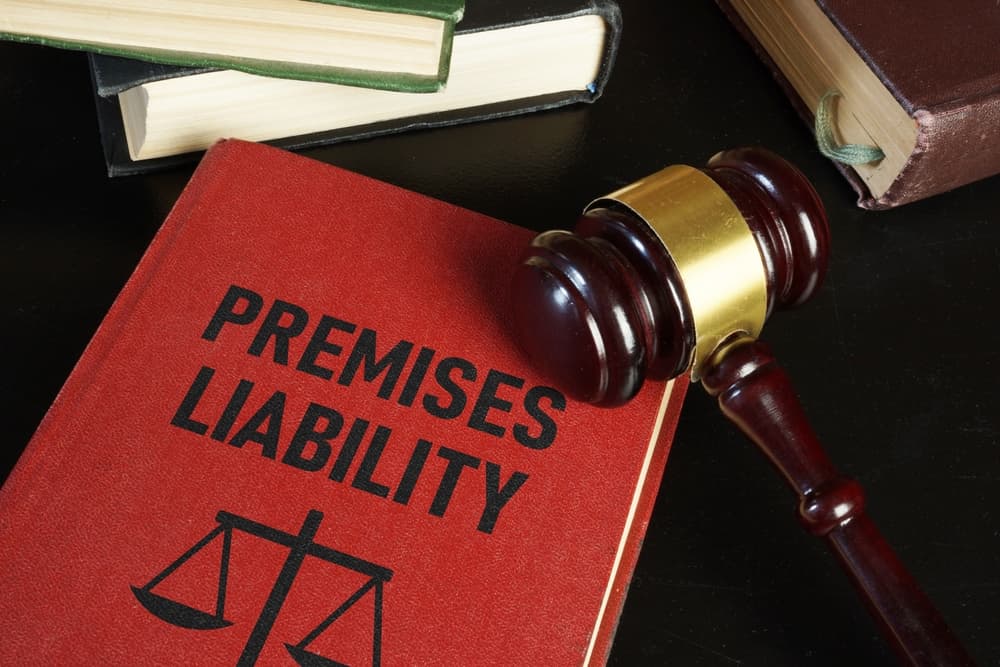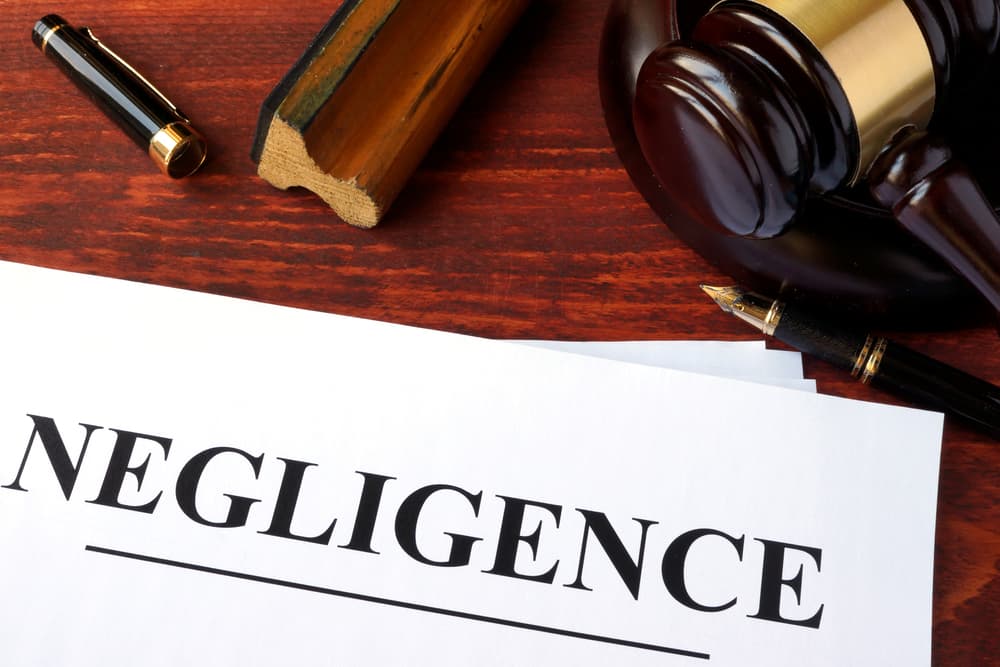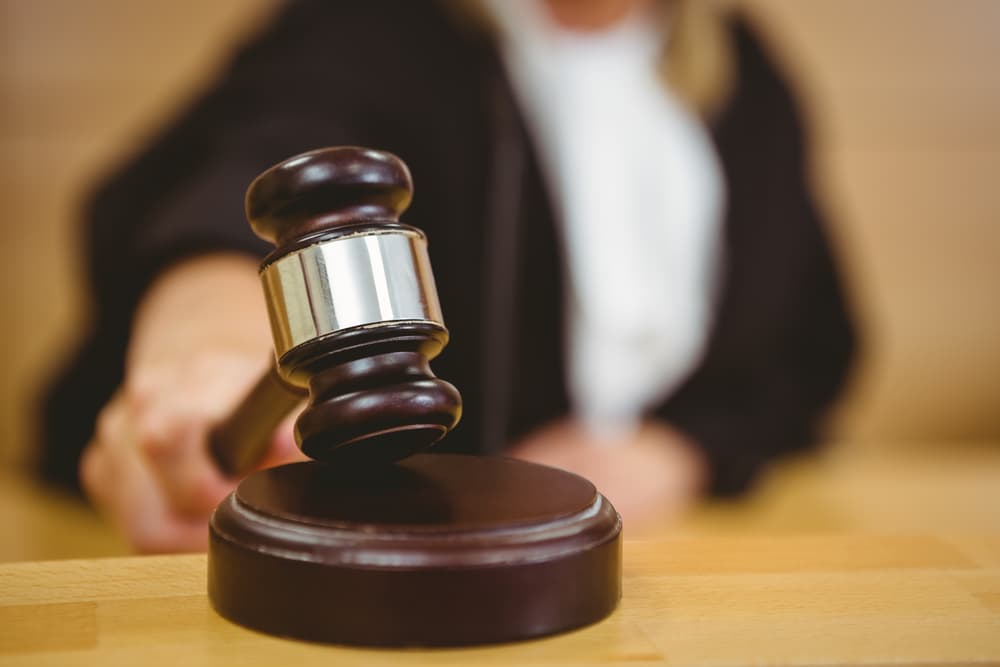California premises liability law creates a duty for those who own, lease, occupy, or control property to keep it reasonably safe for visitors. This means that property owners, occupiers, landlords, and sometimes even government entities can be held liable for slip and fall accidents in California when they fail to maintain reasonably safe conditions or warn visitors about known hazards. Determining liability depends on several factors, including who controls the property, whether they knew or should have known about the dangerous condition, and whether the injured person's own actions contributed to the accident.
Schedule Your Free Consultation
Essential Facts About California Slip and Fall Liability
- Property owners and occupiers must maintain safe conditions and warn visitors about known hazards under California premises liability law
- Liability can extend to landlords, property managers, tenants, contractors, and government entities, depending on who controls the dangerous area
- Proving liability requires showing the responsible party knew or should have known about the hazard through actual or constructive notice
- California's pure comparative negligence system allows recovery even if you're partially at fault, though your compensation is reduced by your percentage of responsibility
- Government entity claims must be filed within six months, while private property claims have a two-year statute of limitations
Understanding California Premises Liability and Slip and Fall Accidents

California premises liability law establishes a legal framework defining who must maintain safe property conditions, what level of care they must provide, and which visitors receive protection under the law. Understanding these fundamental elements helps determine whether property controllers breached their legal duties when accidents occur.
The Legal Duty of Care
Property owners and occupiers in California owe a duty of reasonable care to keep their premises reasonably safe for visitors. This duty encompasses three core obligations:
- Inspection: Regular and systematic examination of the property to discover dangerous conditions
- Maintenance: Prompt repair or remediation of known hazards
- Warning: Adequate notice to visitors about dangers that cannot be immediately corrected
The law measures this duty by what a reasonable person would do under similar circumstances, not by guaranteeing absolute safety.
Who Owes the Duty
The duty to maintain safe premises extends to anyone who owns, leases, occupies, or controls property. This includes:
- Property owners, regardless of whether they occupy the premises
- Business operators and commercial tenants who control leased spaces
- Property management companies with maintenance responsibilities
- Government entities controlling public property
- Contractors who create or control specific work areas
Control over the property or area where the injury occurs determines who bears responsibility, not merely ownership.
Who Is Protected
California has largely eliminated the traditional distinctions between invitees, licensees, and trespassers. Today, property controllers owe a duty of reasonable care to virtually all lawful visitors, including:
- Customers and patrons of businesses
- Social guests in private homes
- Delivery persons and service providers
- Tenants and their guests in rental properties
- Members of the public using sidewalks and public spaces
Even trespassers receive some protection against willful or wanton conduct, though the duty owed to them remains limited. The key factor is whether the person's presence was reasonably foreseeable, making their safety the property controller's responsibility.
Who Can Be Held Liable in California Slip and Fall Cases?
As noted, several different parties may be liable for slip and fall injuries. Who is responsible will depend on who was responsible for keeping the property safe for visitors.
Property Owners and Their Responsibilities
Property owners typically bear primary responsibility for maintaining safe conditions throughout their premises. This duty extends to all areas where visitors are legally permitted, including entrances, walkways, parking lots, and indoor spaces. Owners remain liable even when delegating maintenance responsibilities to others, as they cannot contract away their duty of care to visitors.
Commercial property owners face heightened responsibilities due to the volume of visitors and the invitation extended to the public. Retail stores, restaurants, office buildings, and shopping centers must implement systematic inspection and maintenance procedures to identify and address hazards promptly.
Tenant and Business Operator Liability
Tenants who control leased spaces can be held liable for slip and fall accidents occurring within their premises. A restaurant leasing space in a shopping center bears responsibility for spills in its dining area, while the property owner maintains liability for common areas like corridors and parking lots.
Business operators must train employees to identify and address hazards quickly, particularly in high-traffic areas where spills or debris accumulate frequently. The failure to implement proper safety protocols or provide adequate staffing for hazard monitoring can establish liability when accidents occur.
Landlord Liability for Common Areas
Landlords retain responsibility for maintaining safe conditions in areas under their control, particularly common areas in multi-unit residential and commercial properties. This includes:
- Stairways, hallways, and lobbies in apartment buildings
- Shared laundry facilities and recreation areas
- Parking lots and walkways between units
- Building entrances and mail areas
- Pools, fitness centers, and other amenities
California law holds landlords liable when dangerous conditions in these areas cause injuries, regardless of whether individual unit tenants contributed to the hazard.
Property Management Company Responsibilities
Property management companies assuming maintenance duties through contractual agreements can face liability for slip and fall accidents. Their responsibility depends on the scope of their management agreement and the degree of control exercised over the property. When management companies conduct inspections, oversee maintenance, or make decisions about repairs, they share liability exposure with property owners.
Contractor and Vendor Liability
Independent contractors performing work on properties may bear liability for hazards they create or fail to address. Construction crews leaving debris in walkways, cleaning services creating wet floor hazards without proper warnings, or maintenance workers failing to secure work areas can all face liability claims when their negligence causes injuries.
Proving Notice: Actual vs. Constructive Knowledge
Establishing liability in California slip and fall cases requires proving the responsible party had notice of the dangerous condition. This notice comes in two forms, each with different evidentiary requirements.
Actual Notice
Actual notice exists when the property controller knew about the specific hazard before the accident. Evidence of actual notice includes:
- Written complaints or incident reports about the condition
- Repair requests or work orders addressing the hazard
- Witness testimony that employees were told about the danger
- Video footage showing staff observing but not addressing the condition
- Previous accidents in the same location
Direct evidence of actual notice strongly supports liability claims, as it demonstrates clear knowledge coupled with failure to take corrective action.
Constructive Notice
Constructive notice applies when property controllers should have known about hazards through reasonable inspection and maintenance procedures. Courts consider several factors when determining constructive notice:
The length of time a dangerous condition existed plays a crucial role in establishing constructive notice. A spill present for hours suggests inadequate inspection procedures, while one occurring moments before an accident may not support liability. Evidence like dirty footprints through a puddle, dried edges on spills, or accumulated wear patterns helps establish how long conditions existed.
Industry standards and reasonable inspection intervals also factor into constructive notice analysis. Grocery stores during busy periods might need hourly floor checks, while office buildings could have less frequent inspection requirements. Failing to meet reasonable inspection standards for similar properties can establish constructive notice even without proving exactly when a hazard arose.
The Open and Obvious Defense in California
Property controllers sometimes argue that hazards were so open and obvious that visitors should have avoided them, potentially defeating liability claims. However, California law recognizes that even obvious hazards can create liability when property controllers should anticipate that visitors might still encounter danger due to distraction, necessity, or other factors.
The open and obvious doctrine doesn't automatically bar recovery but instead factors into the broader analysis of reasonable care and comparative negligence. Courts consider:
- Whether visitors could reasonably be expected to notice the hazard
- If alternative routes existed to avoid the danger
- Whether distractions or circumstances prevented hazard recognition
- If the property's design or business operations necessitated encountering the hazard
Property controllers cannot simply ignore obvious dangers, particularly in high-traffic commercial settings where customer distraction is foreseeable. Maintaining obvious hazards without remediation or warning still violates the duty of reasonable care.
Comparative Negligence in California Slip and Fall Cases

California's pure comparative negligence system allows slip and fall victims to recover compensation even when partially responsible for their accidents. The jury assigns percentage of fault to all parties, reducing the victim's recovery proportionally. In other words, if you are partly at fault for your slip and fall injuries, you can still recover, but your compensation will be reduced by your assigned fault percentage.
Common factors affecting comparative negligence in slip and fall cases include:
- Distraction by cell phones or conversations while walking
- Wearing inappropriate footwear for conditions
- Ignoring warning signs or barriers
- Running or moving carelessly through areas
- Entering restricted or clearly dangerous zones
The other side may aggressively argue comparative negligence, making careful case preparation essential. Your actions before, during, and after the accident all factor into fault allocation, emphasizing the importance of accurate incident documentation.
Government Liability for Public Property Slip and Falls
California Government Code Section 835 establishes liability when public entities maintain dangerous conditions on their property. Slip and fall accidents on government-controlled property, like sidewalks, public buildings, parks, or government offices, require proving:
- A dangerous condition existed at the time of injury
- The condition created a reasonably foreseeable risk
- The public entity had actual or constructive notice
- The entity had reasonable time to address the hazard
Public entities face liability for both creating dangerous conditions through negligent acts and failing to address hazards created by third parties or natural causes.
The Six-Month Government Claims Requirement
The California Government Claims Act mandates filing a formal claim with the responsible government entity within six months of injury. This strict deadline cannot be extended except in extremely limited circumstances, making immediate action crucial for accidents on public property.
The claims process requires specific forms and precise information about the incident, injuries, and damages sought. Government entities have 45 days to respond, potentially leading to claim acceptance, rejection, or no response. Only after claim rejection can victims file lawsuits, with just six months allowed from the rejection date.
Evidence Critical to Proving Slip and Fall Liability
Building strong slip and fall cases requires comprehensive evidence gathering starting immediately after the accident. Essential evidence includes:
Photographic and Video Documentation
- Wide shots showing the entire accident scene and surrounding area
- Close-ups of the specific hazard from multiple angles
- Lighting conditions and any vision obstructions
- Warning signs or lack thereof
- Your injuries, torn clothing, or damaged items
Security footage often provides the most compelling evidence, but must be preserved quickly before automatic deletion.
Witness Information and Statements
Witnesses can provide crucial testimony about how long hazardous conditions existed, whether employees knew about problems, and exactly how your accident occurred. Collect names, contact information, and brief statements from anyone who saw the accident or the conditions beforehand.
Incident Reports and Documentation
Many businesses create incident reports after accidents, though they may not volunteer this information. Request copies of all documentation created about your accident, including security logs, maintenance records, and employee statements.
Inspection and Maintenance Records
These documents can establish whether property controllers followed reasonable inspection schedules and addressed known hazards promptly. Look for:
- Cleaning logs and inspection checklists
- Maintenance requests and work orders
- Prior complaints about similar conditions
- Safety meeting minutes discussing hazard prevention
Medical Records Linking Injuries to the Fall
Immediate medical attention creates crucial documentation connecting your injuries to the specific incident. Delays in treatment or gaps in care allow defendants to argue injuries occurred elsewhere or aren't as severe as claimed.
When to Consult a California Premises Liability Attorney

Contact a premises liability attorney as soon as possible after any slip and fall accident. Early legal consultation proves crucial because attorneys can immediately begin identifying all potentially liable parties, uncovering applicable insurance policies you might not know exist, and building your case while evidence remains fresh and witnesses are still available.
An experienced attorney provides immediate value by:
- Identifying Liable Parties: Beyond obvious property owners, attorneys investigate whether liability extends to property managers, maintenance companies, tenants, contractors, or government entities who controlled the hazardous area
- Uncovering Insurance Coverage: Multiple insurance policies may apply to your accident, including general liability, umbrella policies, tenant coverage, and contractor insurance that attorneys know how to locate and pursue
- Building Your Case from Day One: Attorneys can dispatch investigators to photograph conditions, interview witnesses, obtain surveillance footage, and gather maintenance records before they disappear
Even seemingly straightforward slip and fall cases could involve complex liability questions and hidden insurance coverage. Property owners and their insurers begin building defenses immediately, making early legal representation essential.
FAQ for California Slip and Fall Liability Cases
What if I Didn’t Document the Hazard That Caused My Fall?
Don't worry if you couldn't take photos or gather evidence after your fall, attorneys can still build strong cases through other means. They can obtain surveillance footage, maintenance records, incident reports, and witness statements that prove the dangerous condition existed.
Are Businesses Liable for Spills Caused by Other Customers?
Businesses can be liable for customer-caused spills if they had actual or constructive notice of the hazard and failed to clean it within a reasonable time. The key is whether adequate inspection procedures would have discovered and addressed the danger.
What Damages Are Available in California Premises Liability Cases?
Compensation can include medical expenses, lost wages, pain and suffering, permanent disability, and loss of life enjoyment. Serious injuries may warrant future medical costs and diminished earning capacity calculations.
How Much Does a Slip and Fall Lawyer Cost?
At Banderas Law, slip and fall cases are handled on a contingency fee basis, meaning you pay nothing upfront and no attorney fees unless we win your case. We advance all case costs including investigation, expert witnesses, and court filings, so you can pursue justice without financial stress while recovering from your injuries.
How Do I Prove the Property Owner Knew about the Dangerous Condition?
Evidence of notice includes maintenance records, prior complaints, witness testimony about employee knowledge, surveillance footage, and proof the condition existed long enough that reasonable inspections would have discovered it.
Taking Action on Your California Slip and Fall Accident Case

Understanding liability in California slip and fall accidents empowers you to protect your rights and pursue fair compensation for your injuries. Whether dealing with negligent property owners, complex commercial liability, or government entity claims, knowing who bears responsibility and how to prove your case makes the critical difference in achieving justice.
At Banderas Law, we've helped slip and fall victims throughout Southern California hold negligent property owners accountable. Our team understands the complexities of premises liability law and fights tirelessly to secure compensation for medical bills, lost income, and the pain our clients endure.
Contact Banderas Law today at (909) 707-0000 for a free consultation about your slip and fall accident. We can investigate your case, identify liable parties, and show you how we turn challenging situations into successful recoveries for our clients.